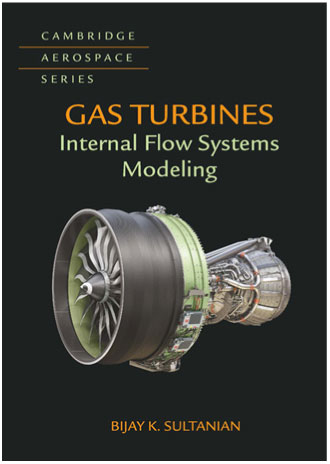
Gas turbines could be cooler, and this book will help designers make them so. It claims to be a ‘physics first, design-orientated text’ and the author who has amassed wide experience of internal flow modelling is well-positioned to deliver this promise.
A short overview of gas turbines is given in the first chapter, which introduces the concept of robust design methodology, and this helps to motivate the importance of internal air systems for engine reliability. A standard review of relevant thermodynamics and fluid mechanics theory is given in the second chapter. This is nicely enhanced by including the effects of rotation and delivers some of that ‘physics-first’.
The remaining content is collected in four chapters – ‘1D Flow and Network Modeling’, ‘Internal Flow Around Rotors and Stators’, ‘Labyrinth Seals’ and ‘Whole Engine Modeling’. The modelling chapters adequately describe the generic process and tools used in these areas and the specific challenges related to internal flow systems. Ultimately the reader will have to also familiarise themselves with those tools available to them, but these chapters help identify some of the key modelling questions that need to be addressed. The flow around rotors and stators and labyrinth seal chapters are useful collections of information of these topics giving a good level of background to physical processes that are not often found in textbooks. References and bibliography are provided at the end of each chapter. A few more recent citations may be expected, but nonetheless, these are very useful lists of well recognised, good quality work and will provide a good ‘stepping-stone’ into deeper literature.
The book is relevant to MSc and PhD students studying gas turbines and delivers a good reference text for the bookshelves of engineers practicing in this subject.


